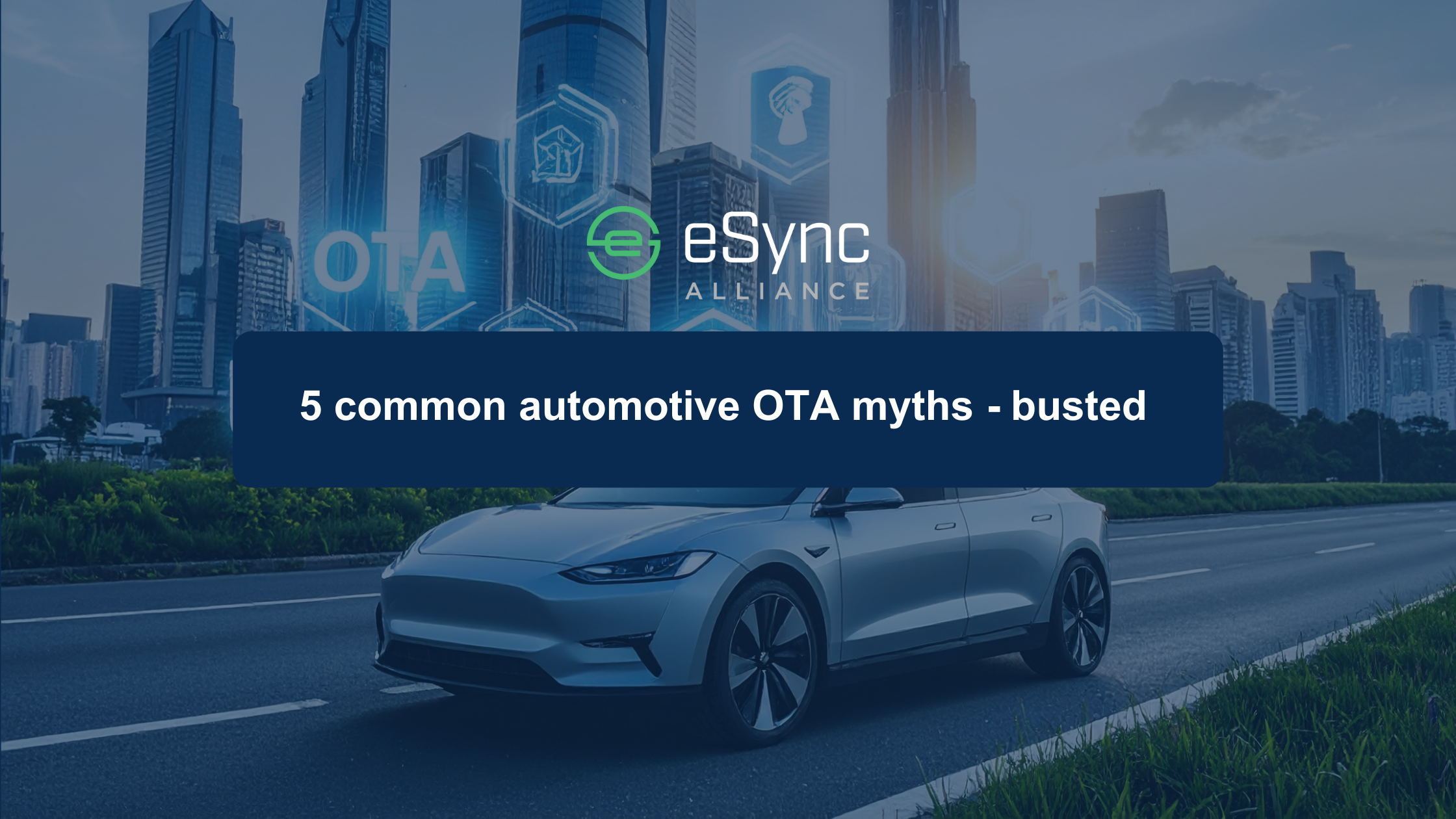Most people think of automotive Over-The-Air (OTA) updates as simple infotainment patches, navigation map refreshes, or basic bug fixes. This narrow view significantly understates what OTA technology has become.
Modern automotive OTA encompasses a comprehensive ecosystem of updates: firmware revisions, configuration parameter adjustments, machine learning model deployments, and critical software upgrades that can fundamentally transform vehicle capabilities. What began as smartphone-inspired convenience features has evolved into mission-critical infrastructure that enables continuous vehicle improvement throughout ownership.
The technology is advancing rapidly, positioning OTA as essential infrastructure rather than a nice-to-have option. As vehicles become increasingly software-defined, robust OTA capabilities will enable manufacturers to adapt, improve, and compete in an evolving automotive landscape. In this blog article, we bust five of the biggest OTA myths…
1. OTA is just for infotainment systems
Infotainment systems were just the start. Modern OTA technology can update almost all vehicle aspects, including the powertrain, battery management systems and ADAS. Describing OTA simply as “infotainment updates” is a limiting definition. It plays a vital role in many critical areas of a modern vehicle; fulfilling tasks which would previously have required a visit to a service center.
Imagine a specific make and model of vehicle kept registering braking performance issues. Rather than issue immediate recalls or pushing customers towards service centers, OEMs could instead make simple updates to braking technology over the air without inconveniencing the vehicle owner or incurring heavy recall costs.
2. OTA is too risky – what if an update fails?
It is actually risker to not have OTA updates in modern vehicles. The automotive ecosystem is built with risk mitigation in mind. OTA platforms have multi-layered safety mechanisms and critical updates, such as ADAS adjustments, go through detailed testing protocols before they are deployed. Well-constructed automotive OTA platforms also provide automated roll-back provisions, so if a new update fails, the system still has the older version of software, to revert back to its previously stable state.
3. Every OEM needs its own OTA system
When OTA first entered the automotive sector, OEMs built their own versions. But this led to fragmentation and confusion. This approach worked initially when updates were relatively basic, but with the increased complexity of updates involving powertrain and safety aspects, a more standardized approach is needed.
Multiple OTA solutions create havoc for suppliers, who must navigate various integrations, protocols and tools for each OEM. These custom OTAs slow everything down. Security fixes need to be redone repeatedly, integrations take longer because of their incompatibility, suppliers can’t reuse tooling across programs, and newer features get rolled out even slower.
This is why standardization is often cited as the future of automotive OTA. The ever-increasing complexity of vehicle software shows that creating a standardized OTA framework is the sustainable way forward. A collaborative, open standard which creates consistency and structure to how OTA is delivered across markets, vehicle platforms and different suppliers is what the eSync Alliance is working toward. Standardization means that suppliers no longer have to rebuild integrations for each new customer, security is built-in, and OEMs don’t have to build everything themselves to be competitive. The entire ecosystem runs smoother, with fewer errors.
4. OTA makes vehicles vulnerable to hackers
When implemented correctly, OTA is one of the most robust parts of a vehicle’s cybersecurity system. Vehicles without OTA often require expensive recalls for OEMs when an issue occurs, and the length of time taken for these recalls to be completed leaves vehicles exposed for long periods of time. But with OTA, manufacturers can implement security patches to anywhere in the world within short periods of time, reducing exposure to attacks. There are also several built-in security features, such as encrypted communications, which makes OTA resilient in comparison to manual updates.
5. OTA is nice to have, but not necessary
Vehicles are now more complex than ever. They depend on interconnected software systems that require regular updates and improvements. OTA fixes issues with batteries, engine control systems and braking functions, which would otherwise necessitate vehicles being kept off the road.
Over-the-air updates happen faster than physical hardware upgrades and are less expensive than recalls. Without OTA, OEMs face logistical nightmares of organizing physical solutions and risk reputational damage through not meeting customer expectations. With OTA, costs are reduced by solving issues remotely and securely, making vehicles safe and more reliable. In the future, OTA will allow for continuous improvement, supporting connected services and smart fleet management, in addition to allowing for swift intervention around security and regulation changes.






![eSyncCES2025_Edit[33]](https://esyncalliance.org/wp-content/uploads/2025/01/eSyncCES2025_Edit33.png)




